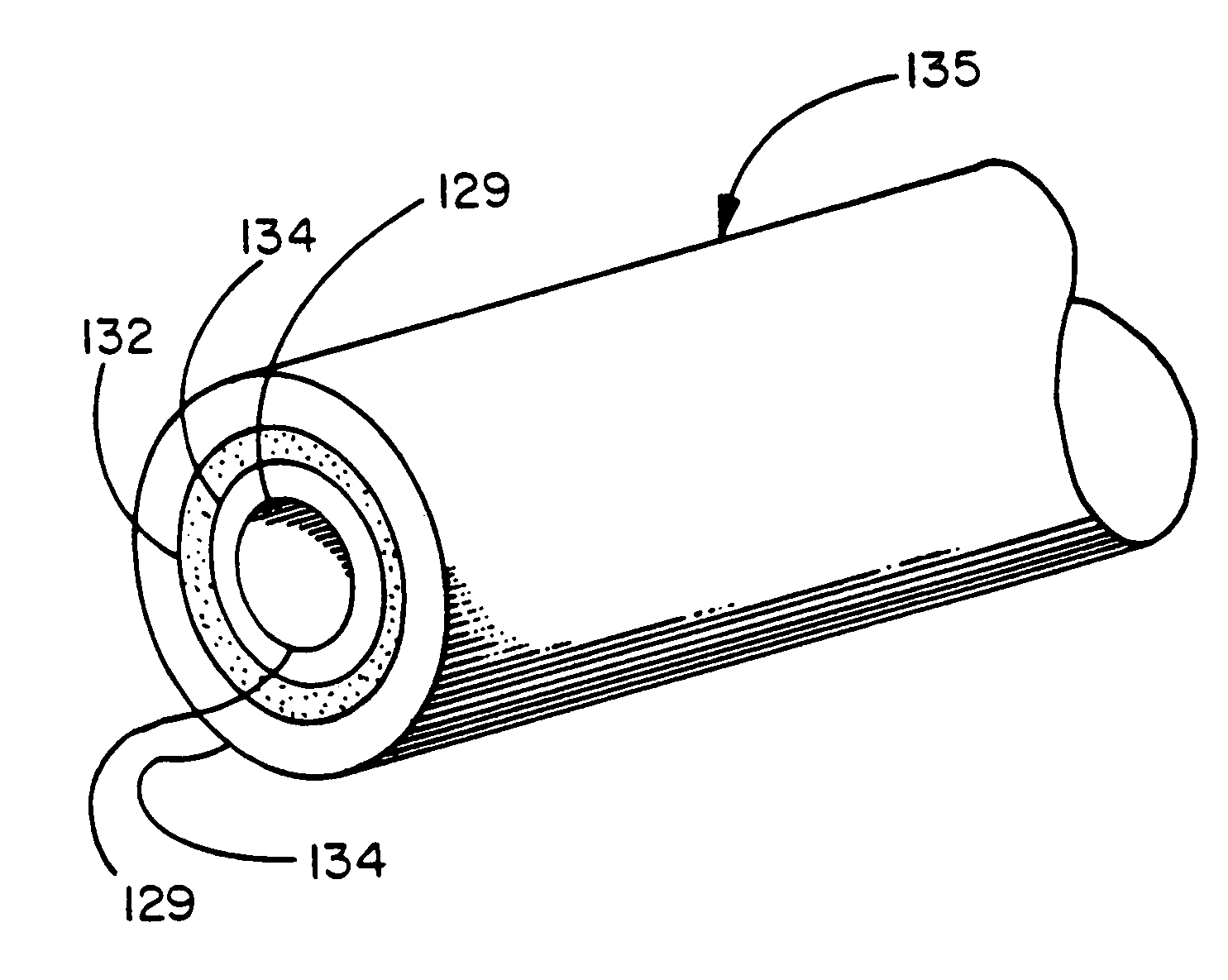Thermoplastic copolymer of tetrafluoroethylene and perfluoromethyl vinyl ether and medical devices employing the copolymer
a technology of perfluoromethyl vinyl ether and thermoplastic polymer, which is applied in the field of thermoplastic polymer of tetrafluoroethylene and perfluoromethyl vinyl ether and medical applications of the copolymer, can solve the problems of unsuitable applications requiring inability to meet the requirements of some degree of elasticity, and inability to meet the requirements of applications, etc., to achieve excellent mechanical properties, excellent biocompatibility, and high tens a technology of a technology of a thermoplastic polymerization and application of a technology of tetrafluoroethylene perfluoroethylene perfluoroethylene perfluoroethylene perfluoroethylene perfluoroethylene perfluoroethylene perfluoroethylene perfluoroethylene perfluoroethylene and a technology of a non-crosslinking technology of a polymerization and medical applications of the field of tetrafluoroethylene and medical applications, tehlu-si-si-si-si-si-si-si-si-si-si-si-si-si-si-si-si-si-si-si-si-si-si-si-si-si-
- Summary
- Abstract
- Description
- Claims
- Application Information
AI Technical Summary
Benefits of technology
Problems solved by technology
Method used
Image
Examples
example 1
[0185]A 2 liter pressure vessel is subjected to vacuum and purge with TFE gas three times to reduce oxygen content to below 30 ppm. 1000 g of deionized water, 50 g of PMVE monomer, and 90 g of ammonium perfluorooctanoate surfactant (Fluororad FC-143, 3M Corp., Minneapolis, Minn.) are added. The mixture is a transparent microemulsion at 50° C. and is maintained at a stirring speed of about 1200 rpm. Then the temperature of the mixture is raised and maintained to be about 75° C., and tetrafluoroethylene gas is charged to the reactor and the pressure inside the reactor is about 1500 KPa. 0.4 g of ammonium persulfate initiator in 40 g of water is pumped into the reactor to start the reaction. Reaction proceeds for about 42 minutes and is stopped. At the end of the reaction, the pressure inside the reactor is about 200 KPa, which means that a sufficient amount of tetrafluoroethylene was used during the polymerization reaction.
example 2
[0186]In a 10 liter stirred pressure reactor, 5.5 kg of deionized water and 150 g of Fluorad® FC143 (3M produced ammonium perfluoro octanoate) were charged, under a constant agitation speed of 900 rpm at ambient condition. Subsequently, the reactor was purged with tetrafluoroethylene gas, following with a vacuum. This was repeated three times to insure the oxygen level in water is below 30 ppm. Then, 510 grams of a liquid perfluoro methyl vinyl ether monomer (CF2═CFOCF3) was charged to the reactor under the same agitation speed. It is important to charge the monomer as a liquid in order to form a microemulsion in water. Then, 550 grams of gaseous tetrafluoroethylene monomer (CF2═CF2) was charged to the reactor. At this moment, the reactor was fully sealed and the inside temperature was raised to 70° C. under the same agitation speed. The pressure inside the reactor was recorded at 1.9 MPa. Then 5 grams of ammonium persulfate, a free radical initiator dissolved in 100 grams of deioni...
examples-other
[0187]The polymer so produced can be applied directly from the colloidal dispersion by immersing a substrate material into the dispersion, or by painting the substrate with the dispersion, or by spraying the dispersion onto the substrate. Suitable substrates include various porous and nonporous substrates, including fabrics, woven or non-woven materials, screens, paper, or porous or microporous membranes of any form including sheets or tubes. Once the coating is applied to the substrate, any water, surfactant or initiators remaining can be drawn off by any convenient means, such as heating, steam stripping, vacuum evaporation, or the like.
[0188]A particularly preferred porous substrate is a microporous polytetrafluoroethylene made by stretching polytetrafluoroethylene as described in U.S. Pat. Nos. 3,953,566 and 4,187,390 to Gore, incorporated by reference. In this procedure the structure comprises polymeric nodes interconnected by fibrils, the nodes and fibrils comprising a microst...
PUM
| Property | Measurement | Unit |
|---|---|---|
| particle size | aaaaa | aaaaa |
| particle size | aaaaa | aaaaa |
| particle size | aaaaa | aaaaa |
Abstract
Description
Claims
Application Information
 Login to View More
Login to View More - R&D
- Intellectual Property
- Life Sciences
- Materials
- Tech Scout
- Unparalleled Data Quality
- Higher Quality Content
- 60% Fewer Hallucinations
Browse by: Latest US Patents, China's latest patents, Technical Efficacy Thesaurus, Application Domain, Technology Topic, Popular Technical Reports.
© 2025 PatSnap. All rights reserved.Legal|Privacy policy|Modern Slavery Act Transparency Statement|Sitemap|About US| Contact US: help@patsnap.com



